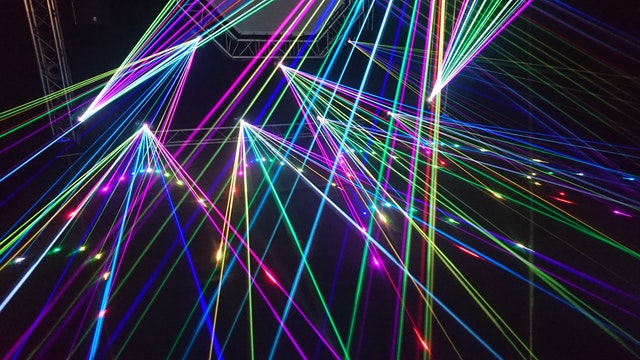Putting on an Awesome Light Show for Live Music Events.

One of the best ways to make a live music event stand out from the rest is the light show accompanying the artist’s performance. The technical capabilities of staging a modern light show have advanced hugely in the last decade as has the cost of getting a slick world class installation built.
The days when the height of a sophisticated light show consisted of a few spotlights, some strobes and beat matched multi-coloured flashing lights are now just a memory form another era. Technology has been a driving force in the most recent changes particularly in the computing power and software required to control everything. However, having all the latest technology to support a light show is only part of the package. The creativity, software programming and mixing desk skills are just as important.
Just as sound engineers perfect an amplified performance to the highest quality a lighting engineer must sync the lighting to reflect the mood and tempo of the music performance. There is a lot that goes into the design of the lighting system that depends on the physical size of the venue, the budget and genre of music. Once designed the rigging and equipment is installed and the final step is how the light engineer sets up the lights and software to the music. During a live music performance the lighting engineer will be busy working very closely to match the music and create a visual feast for event goers.
Some light shows are designed, set up and left to run using timecode, a sequence that can synch up lighting cues with music. The top performing artists and DJ’s prefer to work closely with the lighting engineer to produce a ‘live’ show. In the digital age the lighting desk is a complex, specialised computer and lighting designers will typically attend training courses to get to grips with them. The lighting desk is somewhere between a sound engineer's mixing desk and a sequencer. The lighting designer uses it to send instructions to the lighting fixtures via something called DMX (Digital Multiplex), a standardised digital language, equivalent to audio's MIDI. The development and conversion to LED spotlights and moving heads have certainly enhanced venue lighting along with light tracking systems that can automatically track objects using infrared light pulses and cameras. The development of tools that work together with sequencers for music production, and convert beat-based data to light are technologies that are constantly developing.
For the latest in what is technically possible look no further than the lighting installation at the Printworks club in London. Their light show goes to new levels in execution to build an unforgettable visual experience. Although the owners, Venue Lab, have never disclosed the cost to create Printworks it was stated as a multi-million-pound investment of which a large chunk went on the lighting installation.
Using an events management software solution like FestivalPro can help make the planning and running of live music events more efficient with built in functionality to manage every aspect of light and sound installations. The guys who are responsible for this software have been in the front line of event management for many years and the features are built from that experience and are performance artists themselves. The FestivalPro platform is easy to use and has all the features an event organiser needs to plan and control their live music event.
<< Back to articles
Contact us
Get in touch to discuss your requirements.
US: +1 424 485 0220 (USA)
UK: +44 207 060 2666 (United Kingdom)
AU: +61 (2) 8357 0793 (Australia)
NZ: +64 (0)9887 8005 (New Zealand)